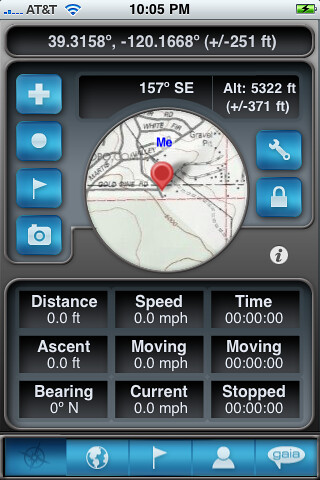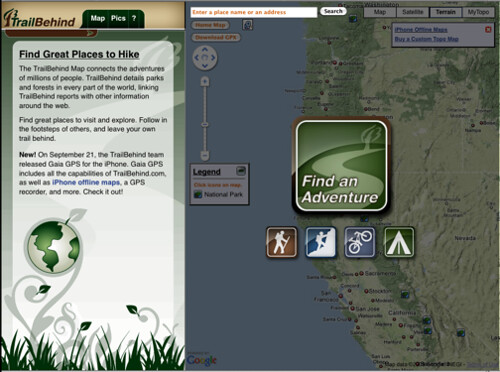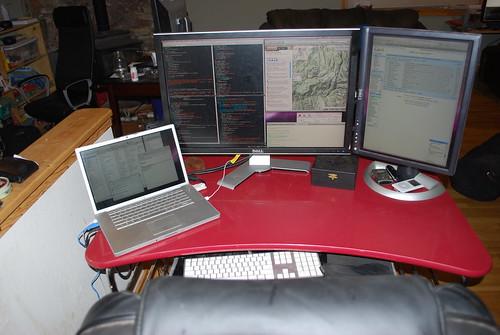I’m a long-time reader and contributor to Hacker News – not the most prolific, but I lurk a lot. When I first moved to San Francisco about 3 years ago, my friends introduced me to Hacker News, Reddit, Seth Godin, and a lot of other influences that eventually drove me to leave my job and found a company.
Hacker News has been a tremendous resource for me. First, it was a source for inspiration, ideas, and philosophy. Later on, when we started building something, Hacker News became a sounding board for ideas, a way to get a critical review of products. And then even later, Hacker News helped us launch and market new software.
Hopefully I’m not being greedy, but now I want something else. I want business advice, and maybe even a CEO. After dreaming and scheming for 18 months, and working full time on this company for 10, my two co-founders and I have finally gotten to what we all know as “ramen-profitable.” In the next of paragraphs I’m going to lay out the history and stance of our business, TrailBehind, in hopes that someone out there has good ideas on what we should do next. If you have advice to impart, please read on, and give us some commentary on HN. If you have really good ideas, don’t need much money, and are interested in leading our company’s business strategy, please contact me at[email protected].
TrailBehind, Inc. – History
My girlfriend and I first dreamt up TrailBehind hiking through the woods about two years ago. I don’t know if computing or hiking is our favorite thing, but it’s close either way. We started the company intent on making a great hiking website – we weren’t quite sure what that meant, but we knew it was tough to find good information on the web, and we didn’t really like any of the community sites out there either.
The result of this was www.trailbehind.com – a mixture of a hiking search engine and social site to help people “find great places to hike.” TrailBehind.com is a moderate success – it gets about 300-400 visits a day and helps us market our new products, but we haven’t worked on it in months. It was enough to win us a $25,000 fbFund grant and secure about $35,000 in other angel funding to get us started, but the internet is a tough market, especially for a niche media product with nothing to sell. So, eventually we turned to the iPhone platform in search of revenues.
Our first iPhone product, TrailBehind, launched last May and earned us a few thousand dollars. TrailBehind basically took TrailBehind.com and brought it to the iPhone, selling for .99 a piece. It was built by our first hire (Feb ’09), and a person I consider to be one of TrailBehind’s co-founders even if he came to the party a few months in – my friend from college Tim Bowen.
Finally making some money was a great morale boost for us, but it still wasn’t enough to keep the lights on. With that in mind, we took another look at the Navigation market on the iPhone and concluded that we needed to address a broader market – not just hikers and climbers and bikers, not just people who spend a lot of time in the woods. We needed a product that people in the city would use – people who run, people who drive, and people just walking around. And so, Gaia GPS was born.

With Gaia GPS, we wanted to build on the unique search capabilities and map overlay capabilities from TrailBehind.com, and incorporate features we knew there were a broad demand for – specifically GPS recording, offline mapping, and related functionality. And that’s where we are today. Gaia GPS launched almost a month ago, and it’s now one of the top 20 apps in Navigation. We now have loads of feedback from users, we are pushing steady releases, and sales and our ranking are climbing. Besides Gaia GPS, we also have our original TrailBehind app, and also Gaia Maps and Gaia Places – which are individual features of Gaia GPS as standalone, less expensive apps.
Today and Tomorrow
Besides just pushing releases and trying to generate some press, we are anticipating more incremental growth in our sales. We now have (in review by Apple) an international version of the app, which is quite a large percentage of the market for GPS apps. We also have in review the “Lite” version of Gaia GPS, which seems to be a proven strategy for selling more apps. So, as far as survival goes, I think we’re there. We still have about $15k from our investors in the bank, and we’re cash flow positive, so that number is now slowly growing. The three of us live a very affordable life, sharing a cabin in Truckee, grocery bills, and keeping expenses to a minimum.
What I am sort of at a loss for now is how to make an order of magnitude improvement in the business. We intend to keep working on Gaia GPS and climbing in the Navigation category, but this app alone will never be worth more than a couple million a year, and it won’t be worth more than a couple hundred thousand next year. I yearn for more.
Pretty quick here, we need to figure out what else we can do. We’ve been working a lot recently – once you launch a product, there is a lot more to do than just code, between talking with users, marketing, keeping your books, and all the day-to-day administrative trivia of owning a business. But, soon we’ll add a few more features to Gaia GPS, iron out bugs users report, and get that product down into a steady release cycle that doesn’t tax our resources completely.
I’ve been thinking a lot about what that next project should be. The major candidates are as follows:
- Gaia Quest – Develop a game built on top of Gaia GPS, based on exploration and map-making. I have drawn up a rough sketch of what this game would look like.
- Military Applications – Build a military oriented version of Gaia GPS. Seek grant funds to from DARPA and similar. I have started to discuss this with a DoD contractor and a VC contact from one of my board members, and this seems like a real possibility, but a big divergence for us.
- Work on Search – Use the runway provided by our iPhone revenues to re-focus on our efforts to build a geographic search engine. This capability is perhaps the most unique thing about all of our products – aggregation and presentation of geo-data. However, it was sidelined because we needed to make money, and we had no clear route to monetize this.
- Other Mobile platforms – Build Gaia GPS for new platforms, such as Palm, Android, or Blackberry. Seek marketing incentives from these platforms to migrate the software, otherwise this is probably not a reasonable path for us right now.
So, I guess I’m just unsure what to do. As is the common Silicon Valley attitude, I have come to believe that ideas are mostly worthless, and execution is king. But while we have managed to execute a few products and make a few dollars, I’m grasping for a good idea. I wonder what to do next. I wonder how much to focus on incremental progress for Gaia GPS. I wonder if we should be aiming to go from making $70,000/year to $200,000/year. Do I shoot for a goal I know I can reach, or is it time to double down and shoot for the stars? Maybe you have a better idea than me.
Please Help
If you go on Hacker News and you are a business guy with a great idea but no software development expertise, you will get asked poignant questions and probably laughed out of the forum if you come looking for hackers to help you execute. Hackers believe that that it all boils down to the software. This is only partially true. All of you idea men quietly lurking in the shadows of HN, this blog post is for you.
Today, my company has plenty of hackers. We all program, led by Anna, who is a truly gifted (and pedigreed) hacker. But we lack vision I think. Today, I need advice, strategy, and ideas. I have discussed this heavily with my board and co-founders, but I’m still not sure what to do.
Before I came to the Valley, I thought of myself as an idea-man, but today I think I know myself a bit better. I’m pretty good at accomplishing a goal, but I’m not so sure I’m great at deciding what goal to focus on. I have a business degree, but I’m not sure I have the requisite flare for marketing. Give me a feature to build, a bug to fix, or even a reporter to call and land a story, I can do that. But if you ask me what’s the next thing TrailBehind should be working on, I fear my ideas aren’t correct. Maybe once I started to lose respect for the strength of the “idea,” I lost the ability to have good ones. Recently, I’m thinking that what I need and have undervalued is a good idea.
So, I guess that’s the end of my rambling. I’m hoping that someone out there can set us on the right track. If you want to know more, if I left out some important details, please ask away on the HN comment thread, and I’ll try and fill in the blanks. If you have ideas or commentary on the state or direction of our business, please post those.
Also, if you think you might be able to steer this ship to grander adventures, drop me an email at [email protected]. There’s a lot of stock to go around, but not much money. Maybe you can change that.





